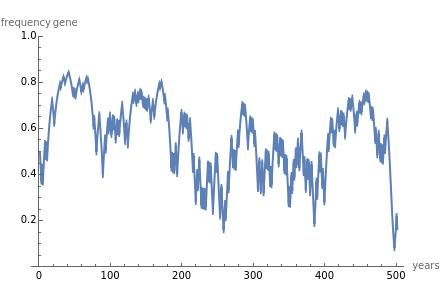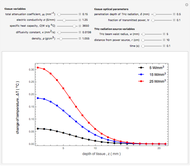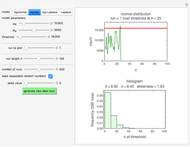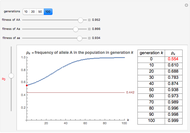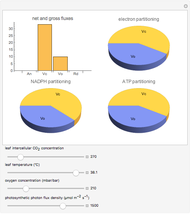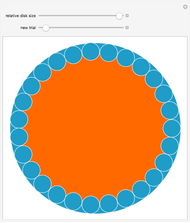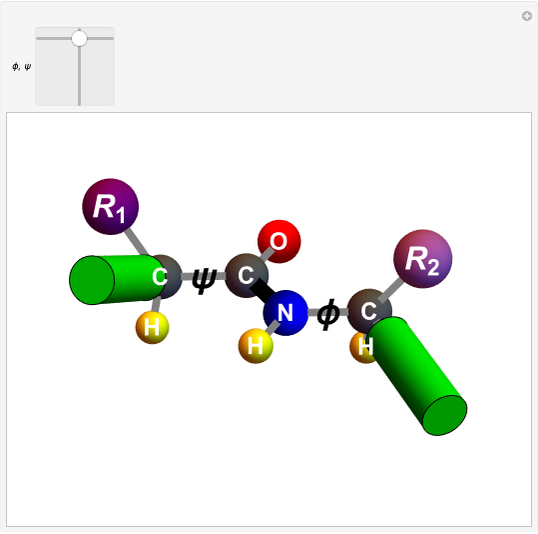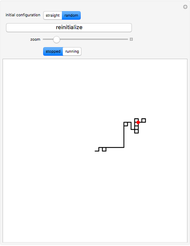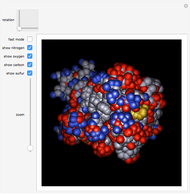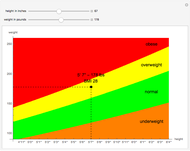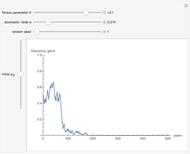Stochastic Diploid Model for Gene Frequency in a Population

Requires a Wolfram Notebook System
Interact on desktop, mobile and cloud with the free Wolfram Player or other Wolfram Language products.
Imagine a single gene with two alleles  and
and  , where the frequency of the
, where the frequency of the  allele in the gene pool of an entire population is
allele in the gene pool of an entire population is  . Assume that this is a large and isolated population, that there is random mating, and that the fitness parameter
. Assume that this is a large and isolated population, that there is random mating, and that the fitness parameter  varies stochastically through the generations. One can then predict the frequency
varies stochastically through the generations. One can then predict the frequency  of the
of the  allele in the population after
allele in the population after  generations.
generations.
Contributed by: Sujatha Ramakrishnan (November 2015)
(IISERTVM)
Open content licensed under CC BY-NC-SA
Snapshots
Details
J. B. S. Haldane (1924) proposed a model for the gene frequency of two phenotypes in a population. Let a pair of alleles  and
and  occur in the ratio
occur in the ratio  .
.
Let  be fully recessive as regards fitness and let the fitness of
be fully recessive as regards fitness and let the fitness of  in the year
in the year  relative to
relative to  and
and  be a stochastic parameter
be a stochastic parameter  .
.
Then  ,
,
or equivalently,
 ,
,
where  is the fraction of dominant allele
is the fraction of dominant allele  and
and  .
.
Haldane showed that polymorphism can be seen in the population as long as the geometric mean of  is less than 1.
is less than 1.
In this Demonstration,  is either
is either  or
or  each year with equal probability 1/2. So the condition for polymorphism is
each year with equal probability 1/2. So the condition for polymorphism is  . This Demonstration shows a time series for
. This Demonstration shows a time series for  . By varying
. By varying  for a fixed fitness parameter
for a fixed fitness parameter  , emergence of polymorphism can be seen at noise level
, emergence of polymorphism can be seen at noise level  .
.
Reference
[1] J. B. S. Haldane and S. D. Jayakar, "Polymorphism Due to Selection of Varying Direction," Journal of Genetics, 58(2), 1963 pp. 237–242. doi:10.1007/BF02986143.
Permanent Citation
